Earth Observer Earth Home Earth Observer Home Editor’s Corner Feature Articles Meeting Summaries News Science in the News Calendars In Memoriam More Archives  4 min read
4 min read
Celebrating the First Earth Day Event at NASA Headquarters 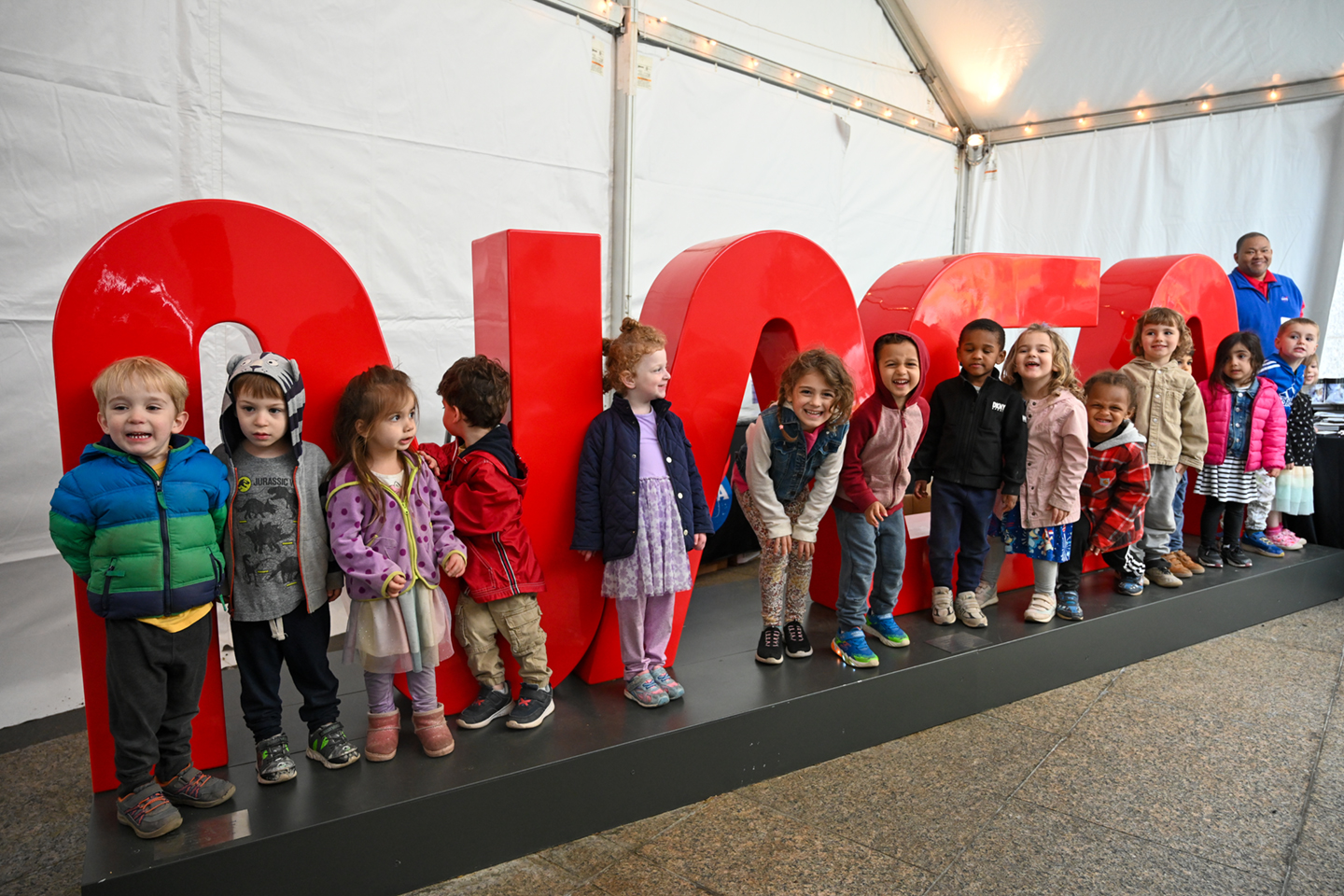 Photo. Young attendees pose in front of the NASA Worm at the Earth Day celebration at NASA HQ. Photo credit: NASA Introduction
Photo. Young attendees pose in front of the NASA Worm at the Earth Day celebration at NASA HQ. Photo credit: NASA Introduction
Organized by the Science Mission Directorate’s Science Support Office (SSO), NASA hosted its 12th annual Earth Day Celebration event from April 18–19, 2024. For the first time ever, the two-day event was held at NASA Headquarters (HQ) in Washington, DC.
The in-person event, which was free and open to the public, featured the newly installed Earth Information Center (EIC) exhibit – see Photos 1–4. The event featured 17 hands-on activities offered in NASA HQ’s East Lobby as well as two adjacent outdoor tents. Event participants were given an activity passport called the “Passport to Fun” listing all the activities and encouraging attendees to visit the stations and interact with NASA staff – see Figure 1. After completing six or more activities, attendees were able to claim giveaway items, e.g., lenticulars, NASA bags, posters, and calendars.
 Photos 1–3. Student attendees at the Earth Information Center (EIC) interactive exhibit. Photo credits: NASA
Photos 1–3. Student attendees at the Earth Information Center (EIC) interactive exhibit. Photo credits: NASA 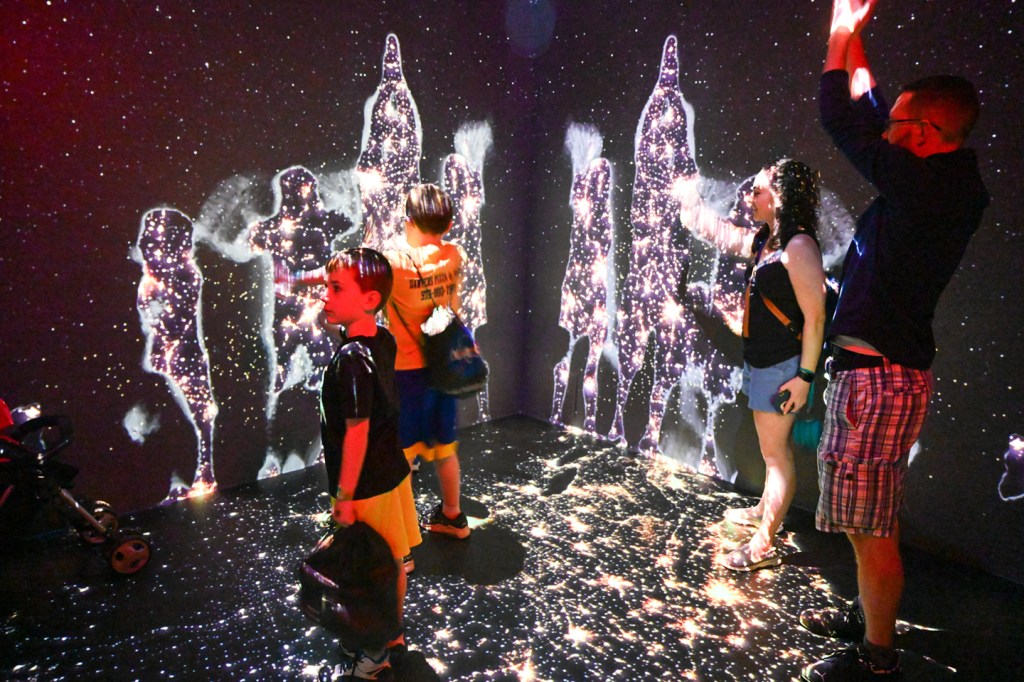 Photos 1–3. Student attendees at the Earth Information Center (EIC) interactive exhibit. Photo credits: NASA
Photos 1–3. Student attendees at the Earth Information Center (EIC) interactive exhibit. Photo credits: NASA 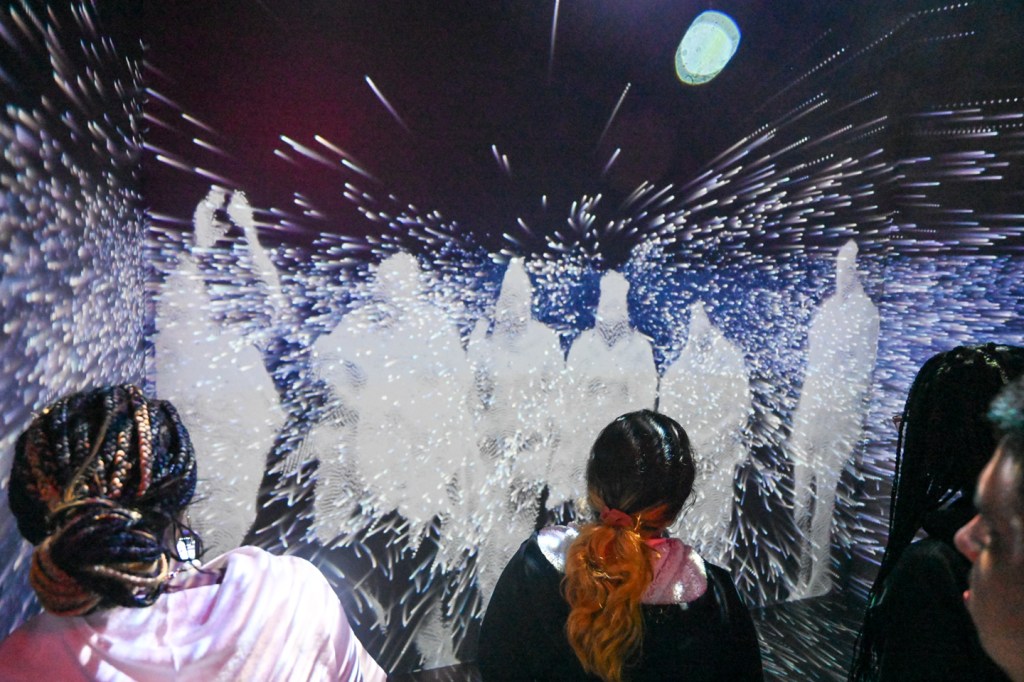 Photos 1–3. Student attendees at the Earth Information Center (EIC) interactive exhibit. Photo credits: NASA
Photos 1–3. Student attendees at the Earth Information Center (EIC) interactive exhibit. Photo credits: NASA
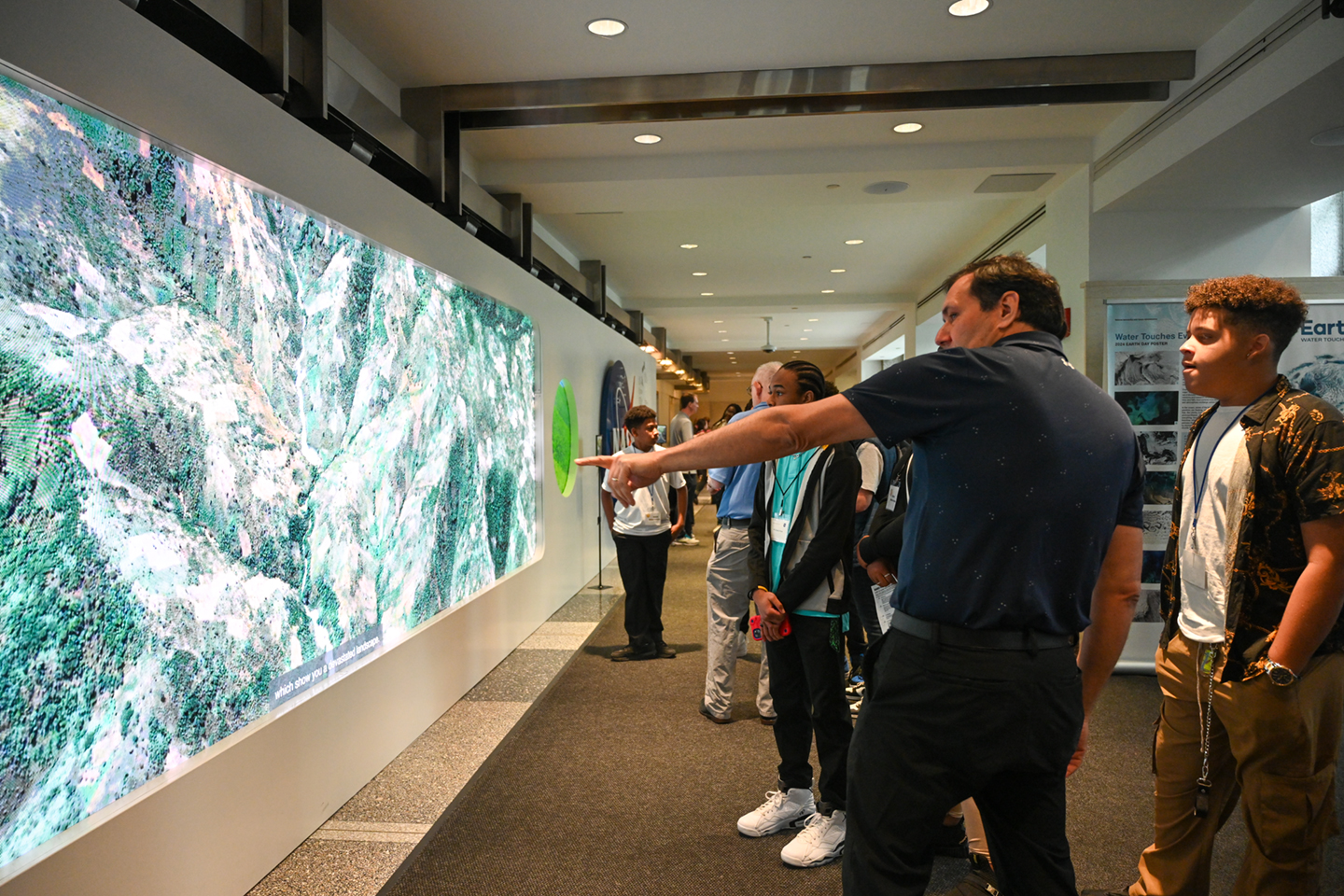 Photo 4. Mark Subbarao [GSFC—Scientific Visualization Studio Lead] engages attendees with NASA science in front of the EIC Hyperwall. Photo credit: NASA
Photo 4. Mark Subbarao [GSFC—Scientific Visualization Studio Lead] engages attendees with NASA science in front of the EIC Hyperwall. Photo credit: NASA 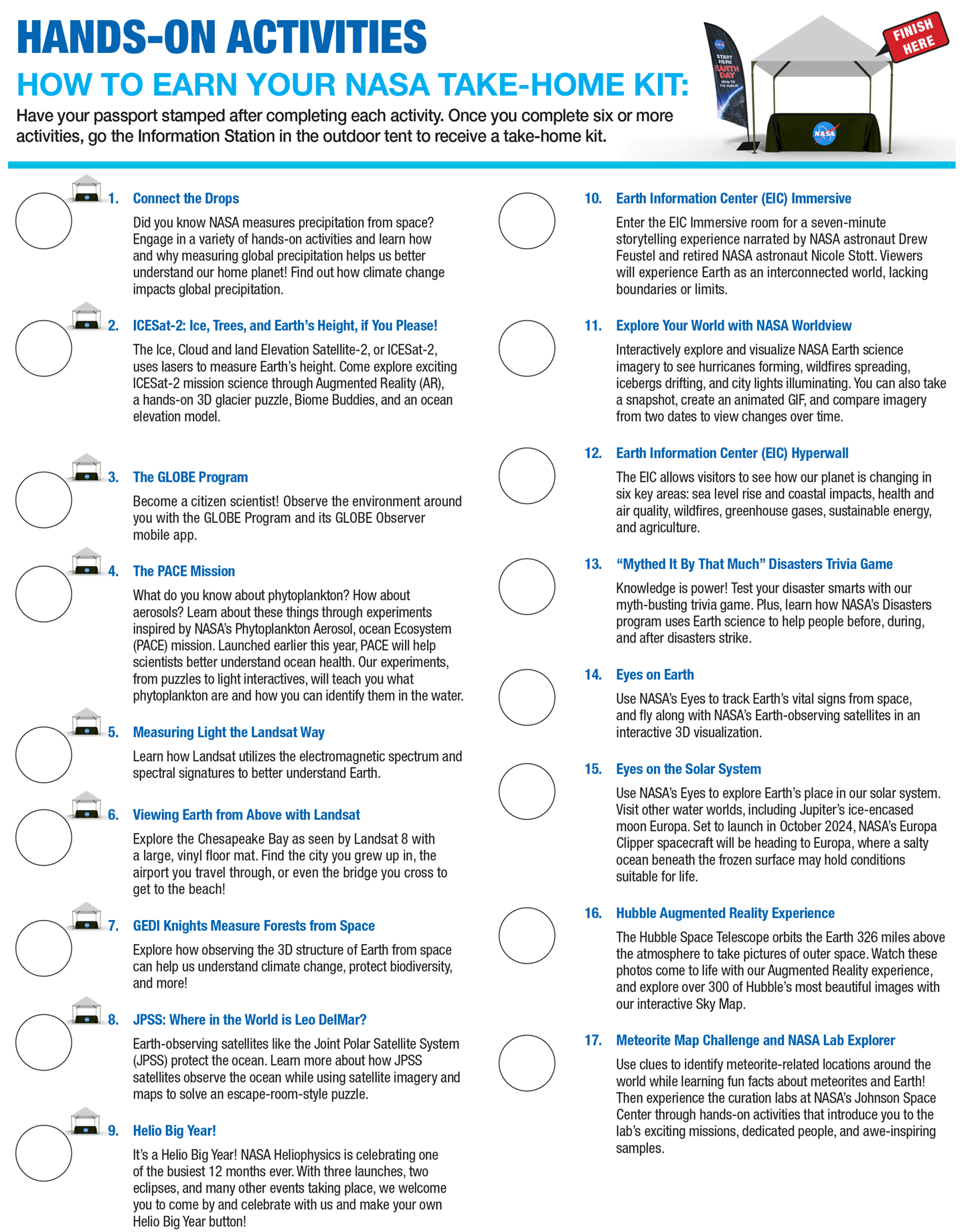 Figure 1. Earth Day Activity Passport. Figure credit: NASA Prior to the event, Trena Ferrell [GSFC—Earth Science Education and Public Outreach Lead] arranged for groups of students from several local schools to visit the NASA Earth Day event. This included over 300 students from DuVal High School, Morgan State University, Howard University, Prince George’s County Environmental Academy, Prince George’s County Virtual Academy, International Hispanic School, and homeschoolers. On April 19, all of the students who were present at that time gathered for a plenary in the Webb Auditorium. Ferrell welcomed the attendees and provided introductions to prepare them for a virtual presentation by former NASA astronaut Paul Richards, who interacted with attendees and answered questions for roughly 20 minutes.
Figure 1. Earth Day Activity Passport. Figure credit: NASA Prior to the event, Trena Ferrell [GSFC—Earth Science Education and Public Outreach Lead] arranged for groups of students from several local schools to visit the NASA Earth Day event. This included over 300 students from DuVal High School, Morgan State University, Howard University, Prince George’s County Environmental Academy, Prince George’s County Virtual Academy, International Hispanic School, and homeschoolers. On April 19, all of the students who were present at that time gathered for a plenary in the Webb Auditorium. Ferrell welcomed the attendees and provided introductions to prepare them for a virtual presentation by former NASA astronaut Paul Richards, who interacted with attendees and answered questions for roughly 20 minutes.
After Richard’s presentation, the attendees heard from Karen St. Germain [NASA HQ—Director of NASA’s Earth Science Division], whose in-person remarks emphasized to the students the crucial albeit less publicized studies that NASA does of our home planet. Related to this year’s Earth Day theme, “Water Touches Everything,” she discussed the ability of NASA’s Earth observing satellites to track water in all its forms as it circulates throughout the Earth system. St. Germain then answered questions from the audience for 15 minutes – see Photos 5–8.
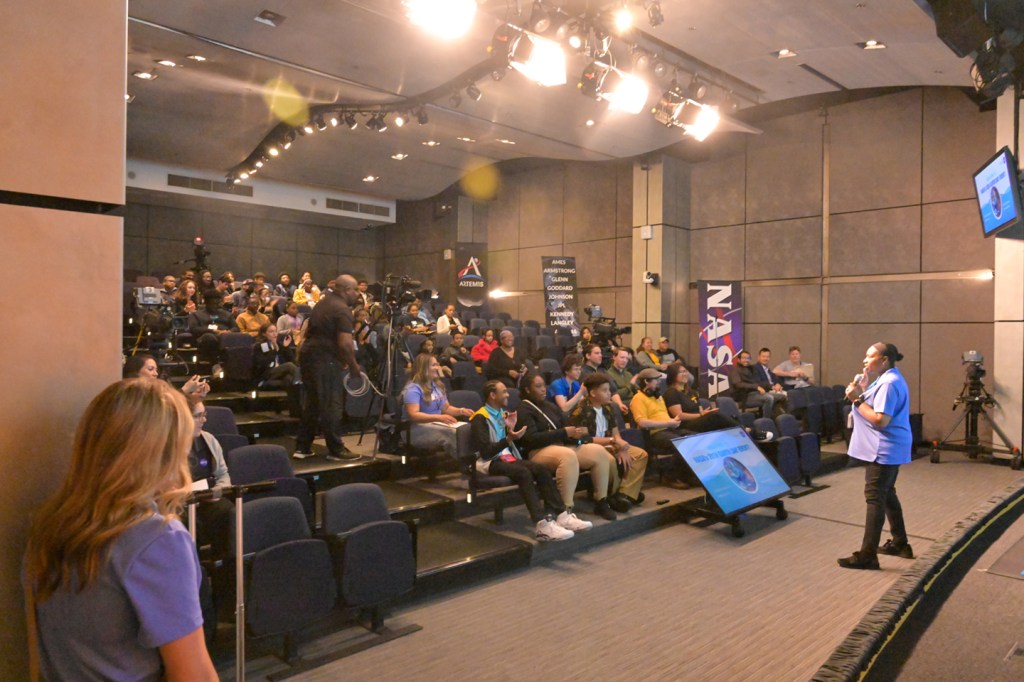 Photo 5.Trena Ferrell [GSFC—Earth Science Education and Public Outreach Lead] welcomed student attendees to the Earth Day event. Photo credit: NASA
Photo 5.Trena Ferrell [GSFC—Earth Science Education and Public Outreach Lead] welcomed student attendees to the Earth Day event. Photo credit: NASA 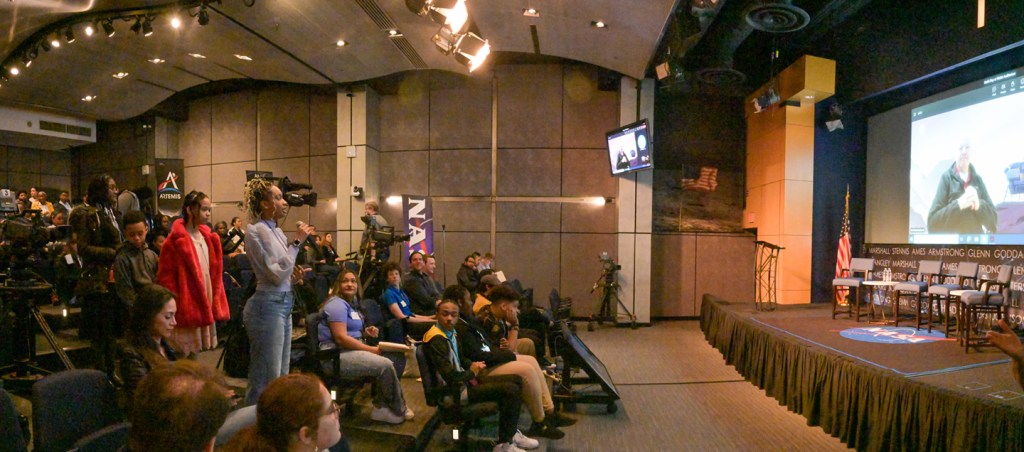 Photos 6–7. Former NASA astronaut Paul Richards takes audience questions at the NASA Earth Day event. Photo credit: NASA
Photos 6–7. Former NASA astronaut Paul Richards takes audience questions at the NASA Earth Day event. Photo credit: NASA 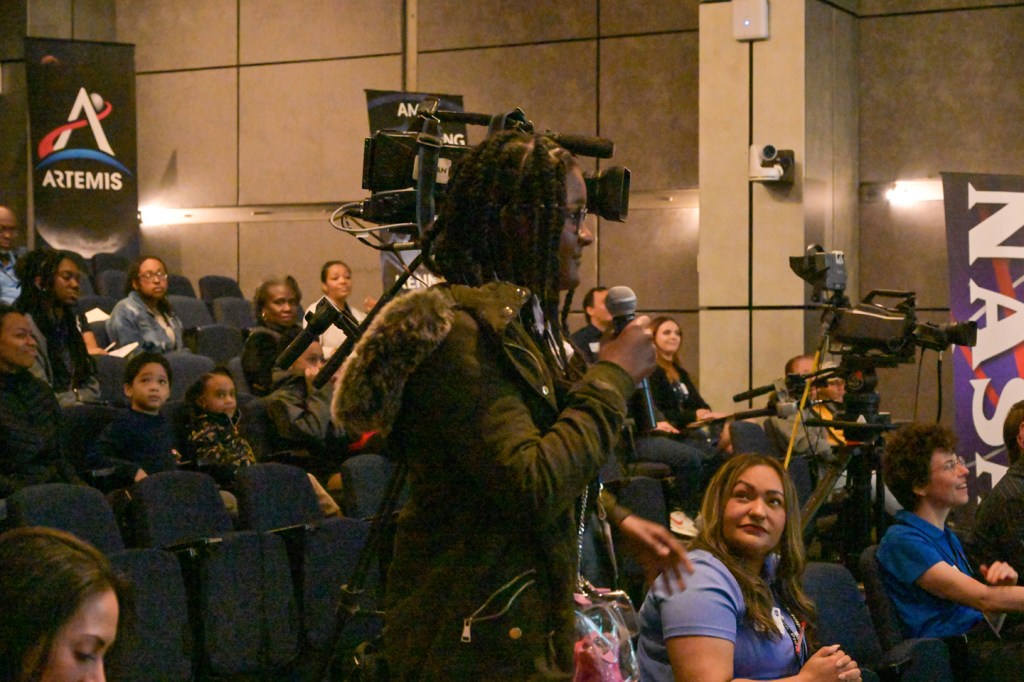 Photos 6–7. Former NASA astronaut Paul Richards takes audience questions at the NASA Earth Day event. Photo credit: NASA
Photos 6–7. Former NASA astronaut Paul Richards takes audience questions at the NASA Earth Day event. Photo credit: NASA  Photo 8. Karen St. Germain [NASA Headquarters—Director of NASA’s Earth Science Division] provided remarks and answered student questions in the Webb Auditorium. Photo credit: NASA
Photo 8. Karen St. Germain [NASA Headquarters—Director of NASA’s Earth Science Division] provided remarks and answered student questions in the Webb Auditorium. Photo credit: NASA
NASA Administrator Bill Nelson visited the event on April 19, accompanied by Karen St. Germain and several NASA staff members who guided him as he explored the activities offered – see Photos 9–10.
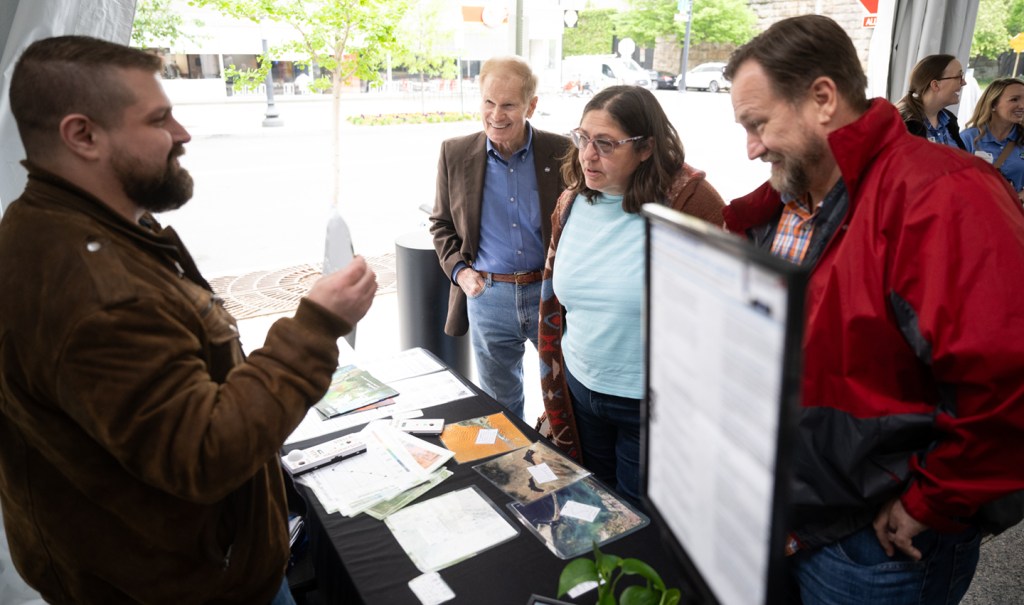 Photo 9. NASA Administrator Bill Nelson [center, rear] spent time circulating among the NASA Earth Day hands-on activities. Here, he visits the “Measuring Light the Landsat Way” activity station, where Mike Taylor [GSFC/Science Systems and Applications, Inc.—Landsat Outreach Team] [left] explains how Landsat utilizes the electromagnetic spectrum and spectral signatures to better understand Earth. Photo credit: NASA
Photo 9. NASA Administrator Bill Nelson [center, rear] spent time circulating among the NASA Earth Day hands-on activities. Here, he visits the “Measuring Light the Landsat Way” activity station, where Mike Taylor [GSFC/Science Systems and Applications, Inc.—Landsat Outreach Team] [left] explains how Landsat utilizes the electromagnetic spectrum and spectral signatures to better understand Earth. Photo credit: NASA 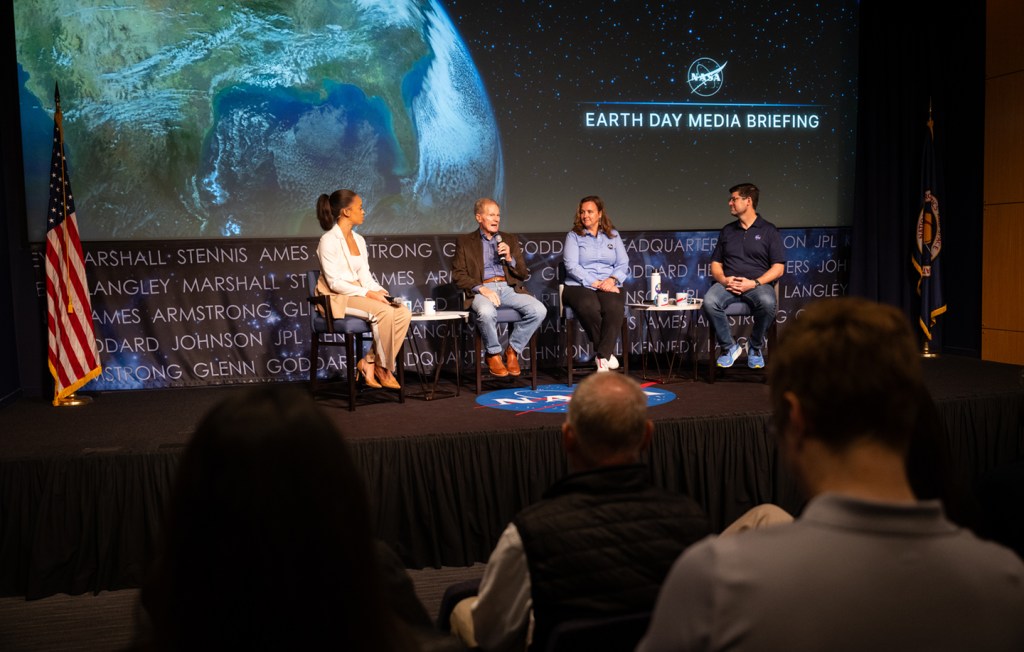 Photo 10. [Left to right] Faith McKie [Acting NASA Press Secretary], Bill Nelson, Karen St. Germain, and Tom Wagner [Associate Director for Earth Action in the Earth Science Division of NASA’s Science Mission Directorate] during the Earth Day media briefing. Photo credit: NASA
Photo 10. [Left to right] Faith McKie [Acting NASA Press Secretary], Bill Nelson, Karen St. Germain, and Tom Wagner [Associate Director for Earth Action in the Earth Science Division of NASA’s Science Mission Directorate] during the Earth Day media briefing. Photo credit: NASA
Throughout the two-day event, it is estimated that as many as 1500 public participants attended along with the 300 students already discussed. While SSO staff distributed 500 activity passports, many small groups and families shared a single passport. SSO staff estimates that the true number of participants may be close to 1500 – see Photos 11–19.
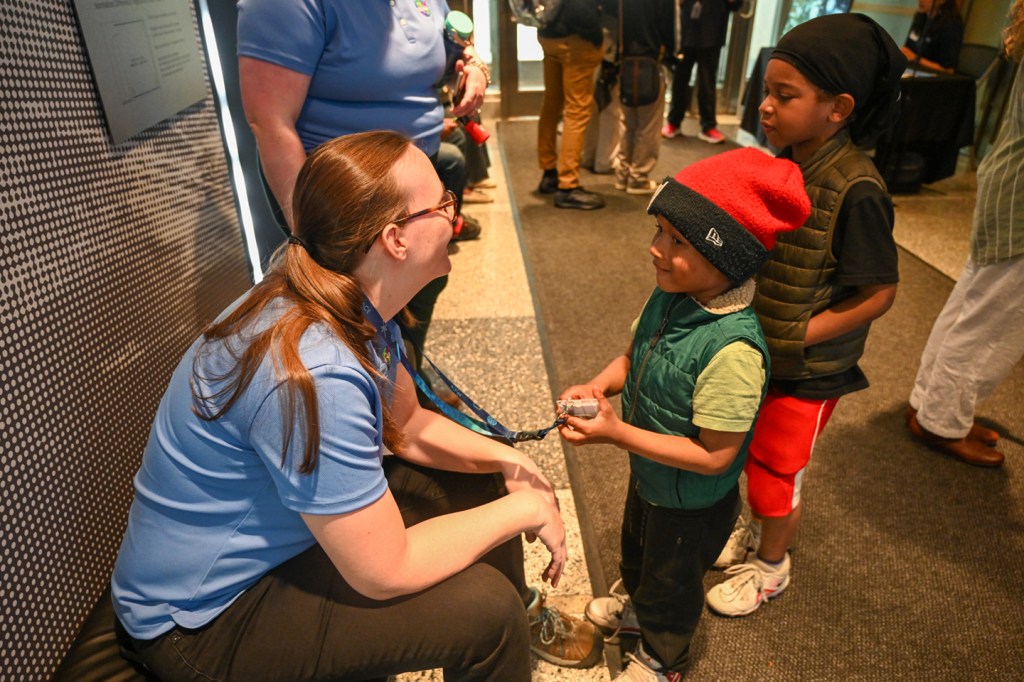 Photo 11. A young Earth Day participant interacts with Ellen Gray [NASA GSFC—Earth Science News Team]. Photo credit: NASA
Photo 11. A young Earth Day participant interacts with Ellen Gray [NASA GSFC—Earth Science News Team]. Photo credit: NASA 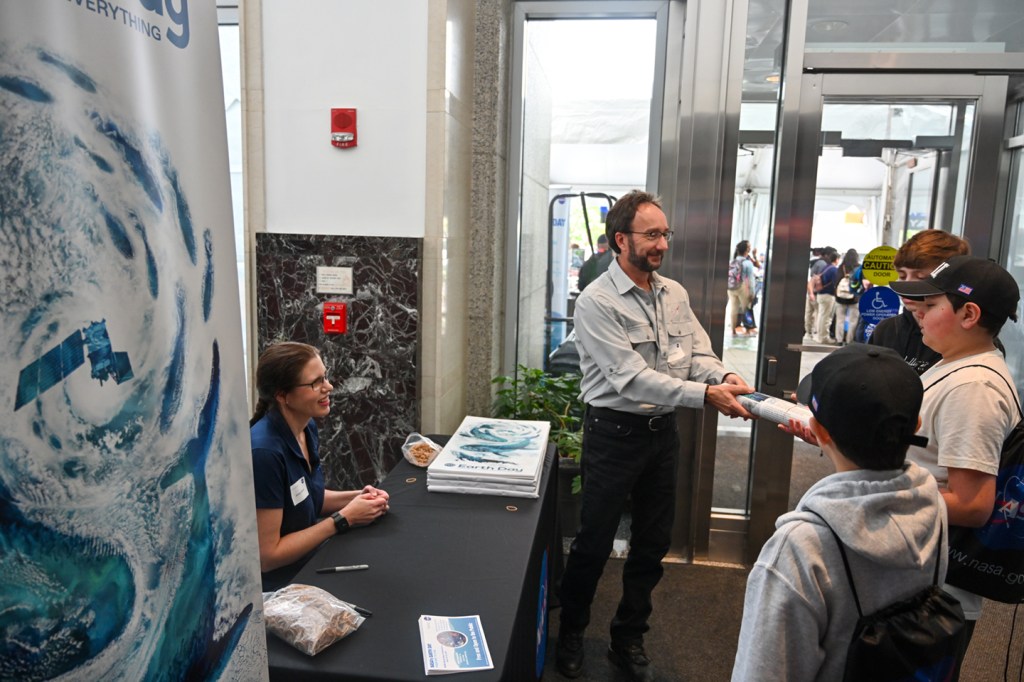 Photo 12. Jenny Mottar [NASA HQ—Art Director for the Science Mission Directorate] and Kevin Miller [GSFC—SSO Senior Graphic Designer] hand out “Water Touches Everything” NASA Earth Day posters to student attendees. Photo credit: NASA
Photo 12. Jenny Mottar [NASA HQ—Art Director for the Science Mission Directorate] and Kevin Miller [GSFC—SSO Senior Graphic Designer] hand out “Water Touches Everything” NASA Earth Day posters to student attendees. Photo credit: NASA 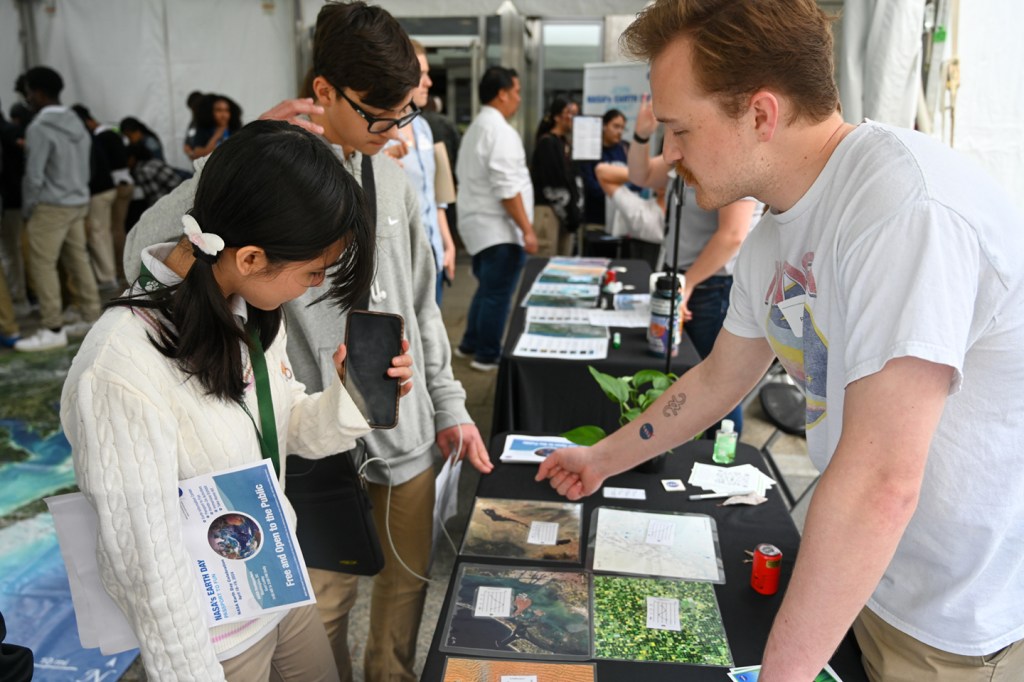 Photos 13. Ross Walter [GSFC—Data Visualizer and Animator, Landsat Outreach Team] engages with students at the “Viewing Earth From Above with Landsat” station. Photo credit: NASA
Photos 13. Ross Walter [GSFC—Data Visualizer and Animator, Landsat Outreach Team] engages with students at the “Viewing Earth From Above with Landsat” station. Photo credit: NASA 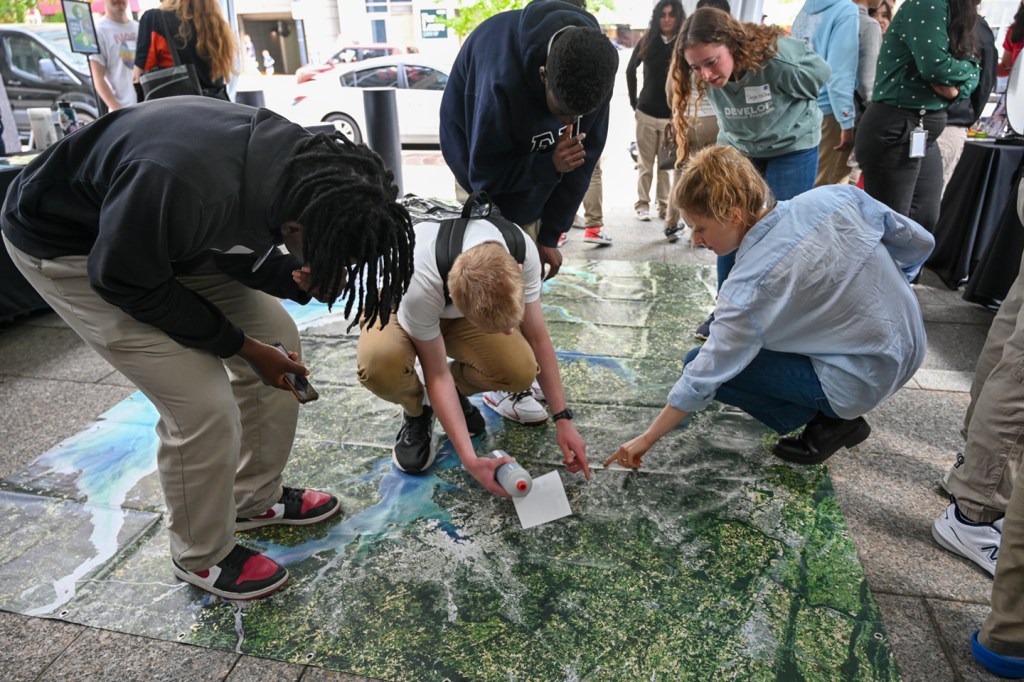 Photos 14. Students explore the Chesapeake Bay as seen by Landsat 8 with a large, vinyl floor mat. Photo credit: NASA
Photos 14. Students explore the Chesapeake Bay as seen by Landsat 8 with a large, vinyl floor mat. Photo credit: NASA 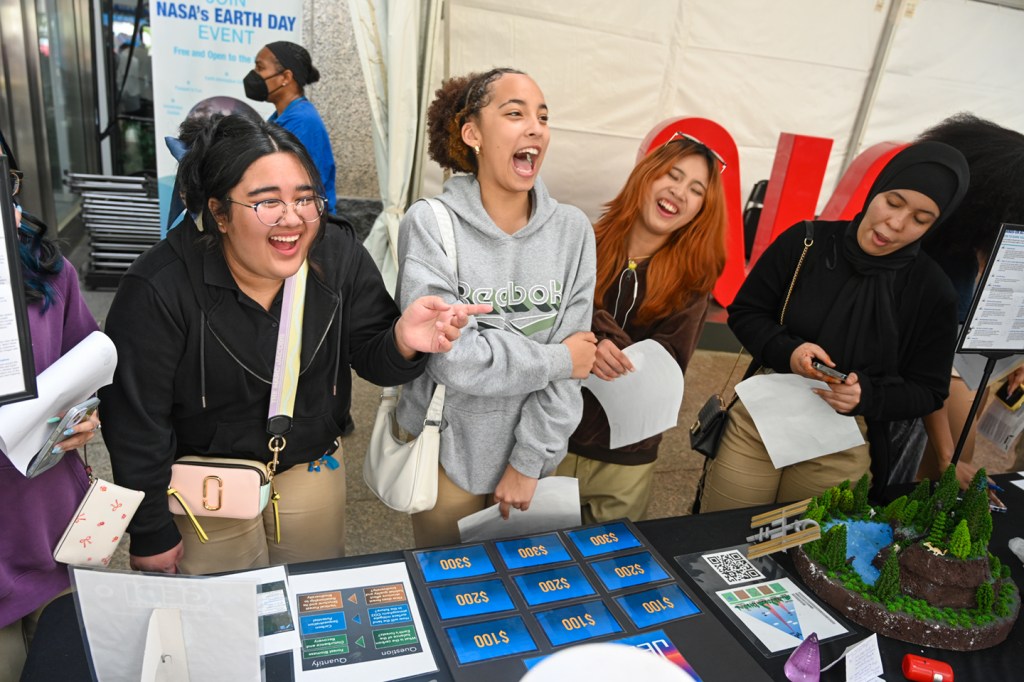 Photo 15. Students play a Global Ecosystem Dynamics Investigation (GEDI) Jeopardy game at the “GEDI Knights Measure Forests from Space” table. Photo credit: NASA
Photo 15. Students play a Global Ecosystem Dynamics Investigation (GEDI) Jeopardy game at the “GEDI Knights Measure Forests from Space” table. Photo credit: NASA 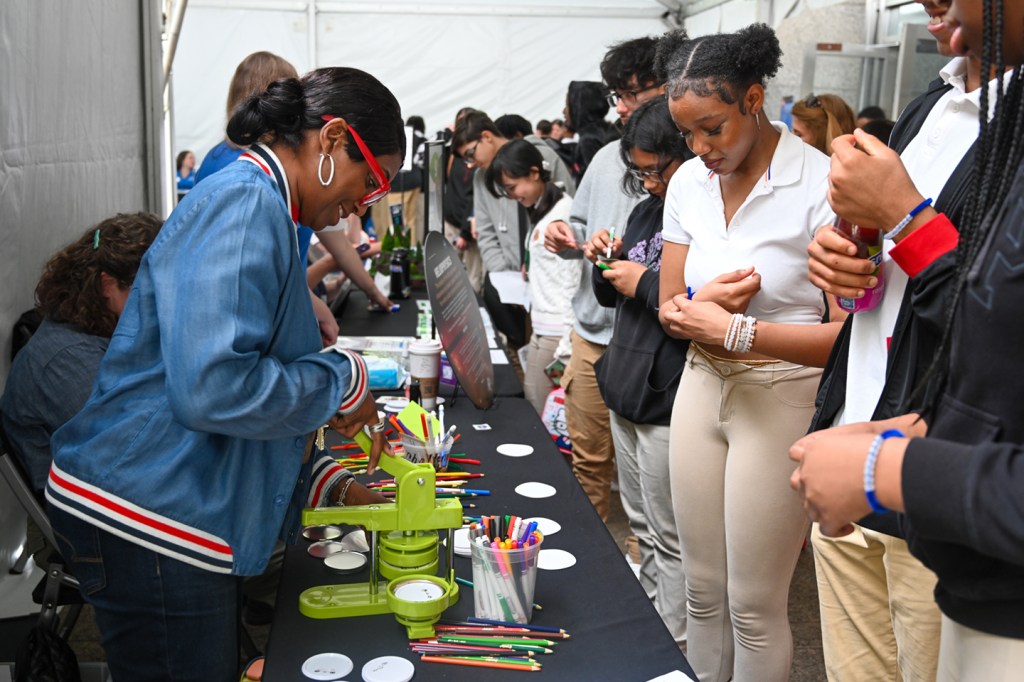 Photo 16. Student attendees make ultraviolet-bead bracelets and Helio Big Year buttons at the Heliophysics station. Photo credit: NASA
Photo 16. Student attendees make ultraviolet-bead bracelets and Helio Big Year buttons at the Heliophysics station. Photo credit: NASA 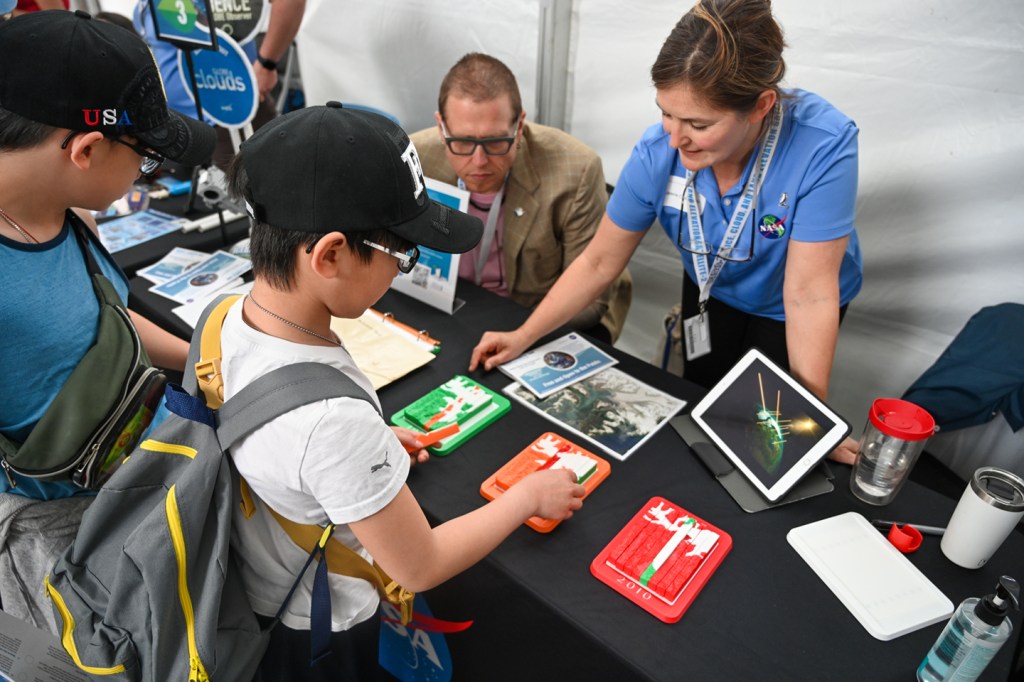 Photo 17. Young attendees engage with Valerie Casasanto [GSFC—Ice, Cloud, and land Elevation Satellite-2 (ICESat-2) Outreach Lead], who helps them work on a three-dimensional glacier puzzle at the “ICESat-2: Ice, Trees, and Earth Height, If You Please!” station. Photo credit: NASA
Photo 17. Young attendees engage with Valerie Casasanto [GSFC—Ice, Cloud, and land Elevation Satellite-2 (ICESat-2) Outreach Lead], who helps them work on a three-dimensional glacier puzzle at the “ICESat-2: Ice, Trees, and Earth Height, If You Please!” station. Photo credit: NASA 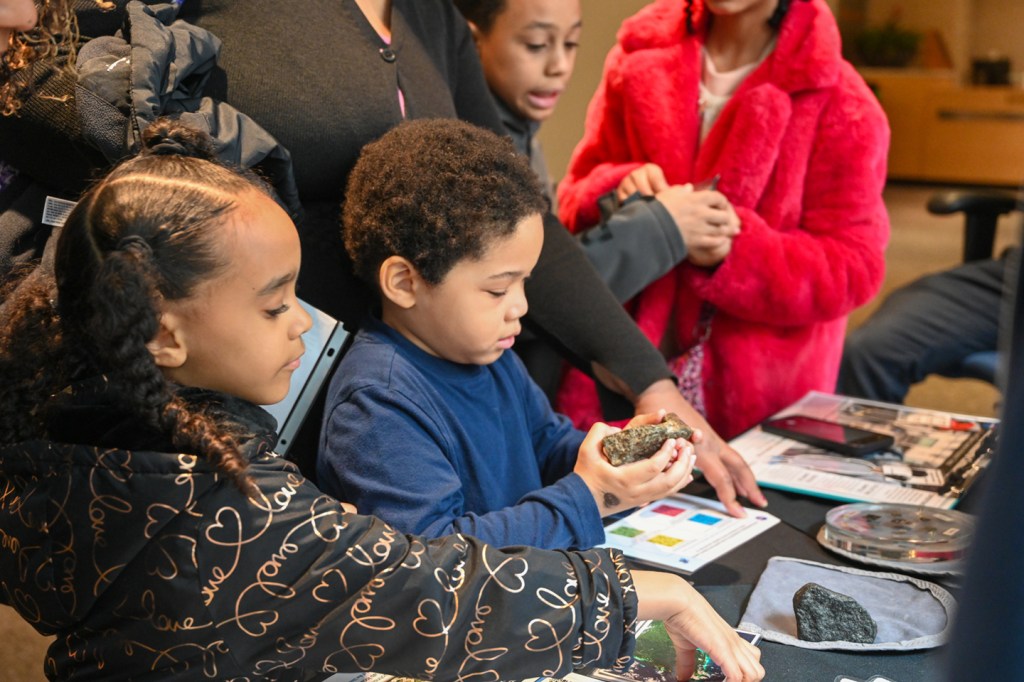 Photo 18. Young attendees engage with the “Meteorite Map Challenge.” Photo credit: NASA
Photo 18. Young attendees engage with the “Meteorite Map Challenge.” Photo credit: NASA 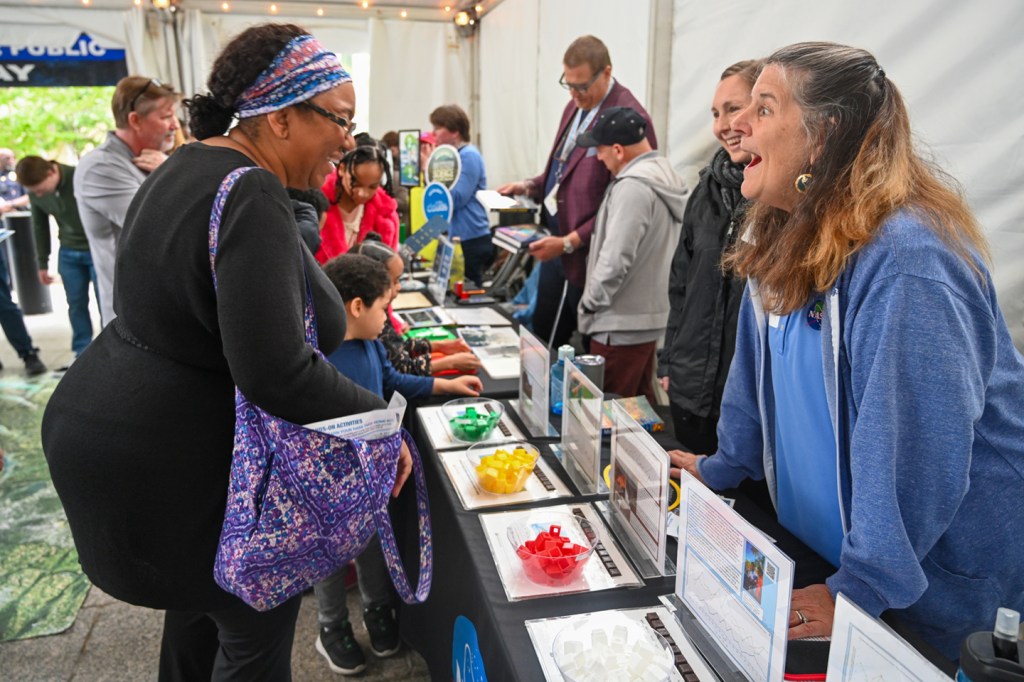 Photo 19. Dorian Janney [GSFC—GPM Outreach Specialist] engages visitors at the “Connect the Drops” station, where visitors learn how and why measuring global precipitation helps us better understand our home planet. Photo credit: NASA
Photo 19. Dorian Janney [GSFC—GPM Outreach Specialist] engages visitors at the “Connect the Drops” station, where visitors learn how and why measuring global precipitation helps us better understand our home planet. Photo credit: NASA
Conclusion
NASA’s first Earth Day Celebration at NASA Headquarters was quite successful. While attendance was lower than previous events held at the more heavily trafficked Union Station or the National Mall, there was a steady stream of people throughout the exhibit on both days. It was also a great opportunity to showcase the new EIC to the public. Earth Day is the largest event organized annually by the SSO. This event requires months of planning, cross-divisional coordination, and intensive design of the hands-on activities – all carried from conceptualization through numerous revisions to implementation by more than 100 individuals from across the agency. This combined effort of SSO staff and assisting organizations results in an event that brings together thousands of visitors from a broad spectrum of ages and backgrounds to enjoy NASA science. This event would not have been possible were it not for the incredible efforts and collaboration put forth by so many of NASA’s outreach professionals. The SSO is grateful for all who helped to make this year’s Earth Day event a success and looks forward to Earth Day 2025.
Dalia Kirshenblat
NASA’s Goddard Space Flight Center/Global Science & Technology, Inc. (GSFC/GST)
dalia.p.zelmankirshenblat@nasa.gov
Details Last Updated Sep 17, 2024 Related Terms Earth Science


